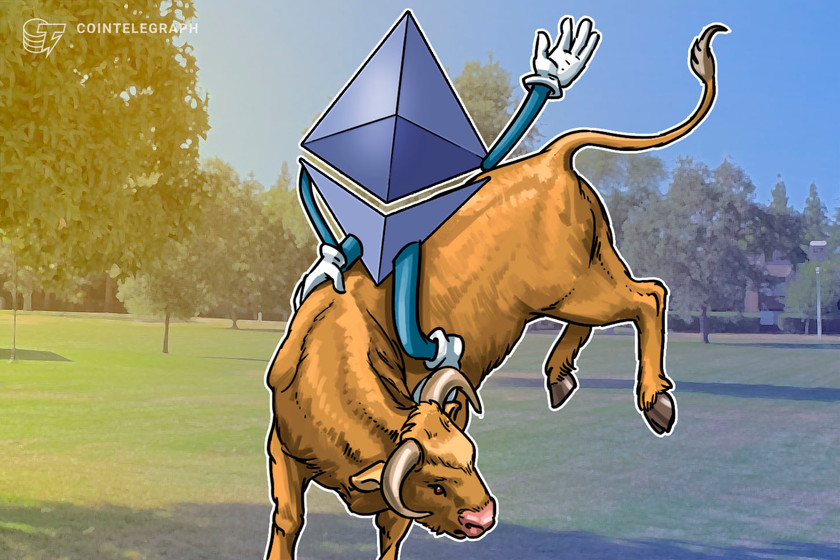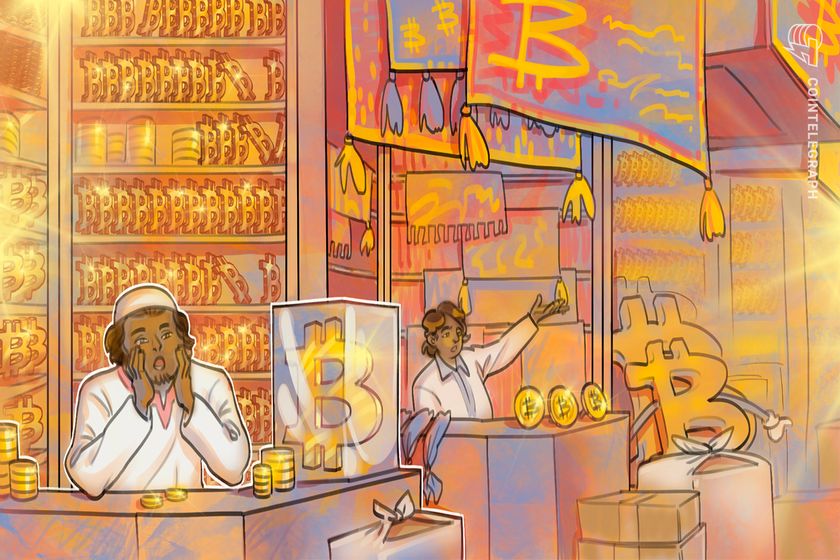
Ethereum has strong fundamentals, so why are pro traders bearish on ETH?

Ethereum price has outperformed Bitcoin by 32% since May but derivatives data shows pro traders are feeling less bullish about the top altcoin.
Ether (ETH) has outperformed Bitcoin (BTC) by 32% since May and even though there has been a steady flow of bullish reports from JPMorgan and Goldman Sachs, derivatives metrics show elements of bearishness in both assets.

Bitcoin is trading 41% below its $64,900 all-time high and that move has driven the “Crypto Fear and Greed Index” to the lowest level since March 2020. While retail fears the dip, professionals such as global investment firm Guggenheim Investments have filed with the United States Securities and Exchange Commission for a new fund that may seek exposure to Bitcoin.
Billionaire investor Stanley Druckenmiller reiterated his bullish stance on Bitcoin when he said:
“I think BTC has won the store of value game because it’s a brand, it’s been around for 13-14 years and it has a finite supply”.
Ethereum network momentum has been outstanding
Ethereum overtook Bitcoin in terms of miner revenue and network value transacted right as a report from Goldman Sachs revealed the global investment bank believes that Ether has a “high chance of overtaking Bitcoin as a dominant store of value.” The report noted the growth of the decentralized finance sector and the non-fungible token ecosystems being built on Ethereum.

Notice how Ethereum miners’ revenue significantly outpaced Bitcoin’s in May, reaching a $76 million daily average. This figure leapfrogged Bitcoin’s $45 million in miners revenue, including the 6.25 subsidy per block, plus transaction fees.
A similar situation happened in the amount transacted and transferred on each network. For the first time, Ethereum presented a significant advantage according to this metric.

The chart above shows the Ethereum network settling $25 billion per day on average, which is 85% higher than Bitcoin’s. Stablecoins certainly played an important role, but so did the $50 billion net value locked in decentralized finance applications.
The futures premium is slightly bearish
When measuring the futures contract premium, both Bitcoin and Ether display similar levels of bearishness. The basis rate measures the difference between longer-term futures contracts and the current spot market levels.
The one-month futures contract usually trades with 10%–20% premium versus regular spot exchanges to justify locking the funds instead of immediately cashing out.

As depicted above, the futures premium has been below 10% since the May 19 crash for both Bitcoin and Ether. This indicates a slight bearishness, although far from a negative indicator, known as backwardation.
Ether’s 25% delta skew signals “fear”
To assess Ether trader’s optimism, one should look at the 25% delta skew. The metric will turn positive when the neutral-to-bearish put options premium is higher than similar-risk call options. This situation is usually considered a “fear” scenario. On the other hand, a negative skew translates to a higher cost of upside protection and points toward bullishness.

Similar to the futures premium, Ether options 25% delta skew has been ranging above 10% since May 19. This indicates that market makers and whales are unwilling to offer downside protection, indicating “fear”.
Albeit distant from a highly adverse situation, both Ether derivatives indicators point to a complete lack of bullishness, despite the altcoin 270% gain year-to-date.
In the face of this disappointing data, some analysts will find the “glass half full” as it leaves room for a positive surprise. The Ethereum Improvement Proposal 1559, or EIP-1559, expected for July, will create a base network fee that would fluctuate based on network demand. The update also proposes to burn transaction fees, thereby introducing deflation to the Ethereum ecosystem. OKEx analyst Rick Delaney stated that it “may enhance the asset’s appeal among the planet’s wealthiest investors.”
The views and opinions expressed here are solely those of the author and do not necessarily reflect the views of Cointelegraph. Every investment and trading move involves risk. You should conduct your own research when making a decision.
Go to Source
Author: Marcel Pechman









